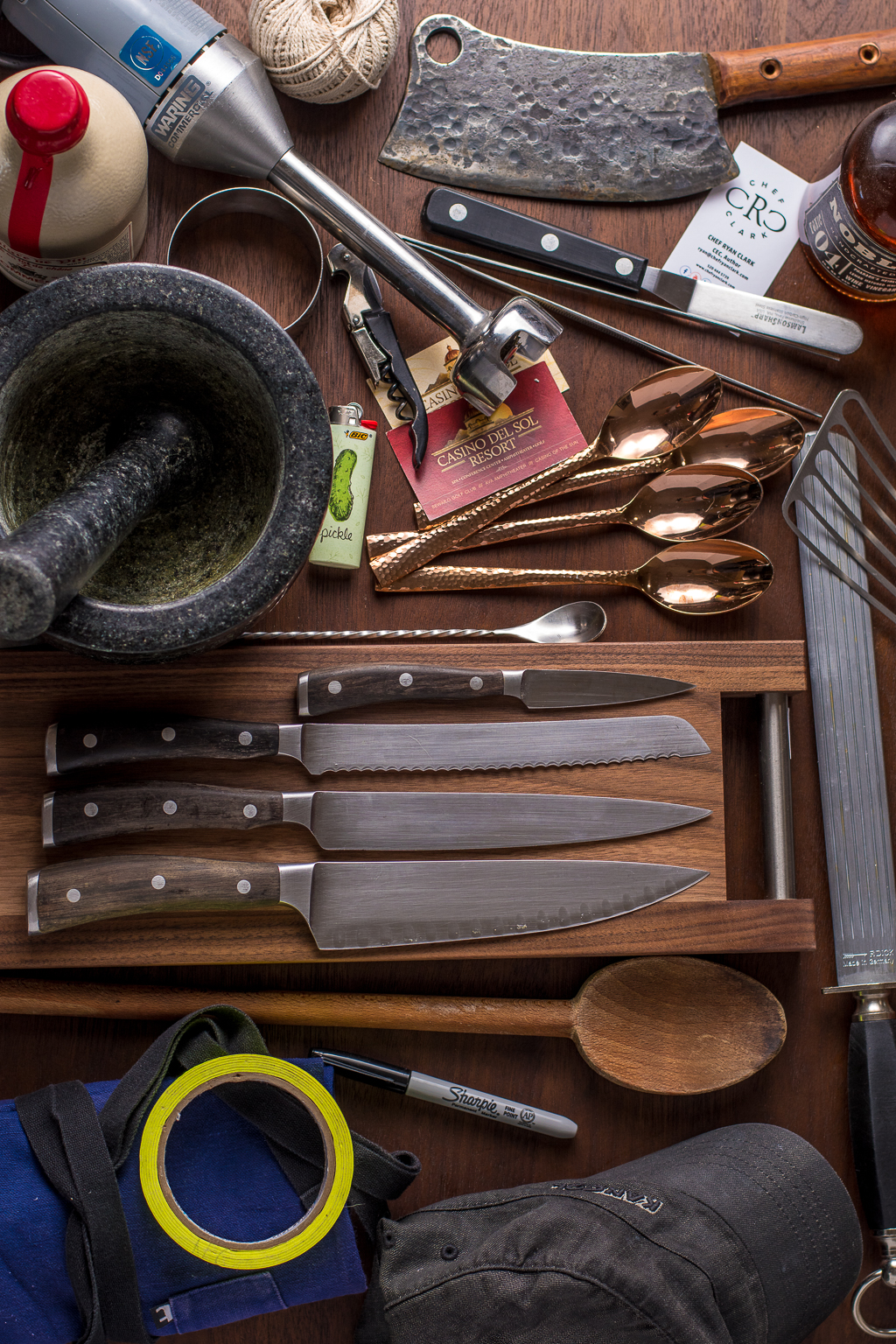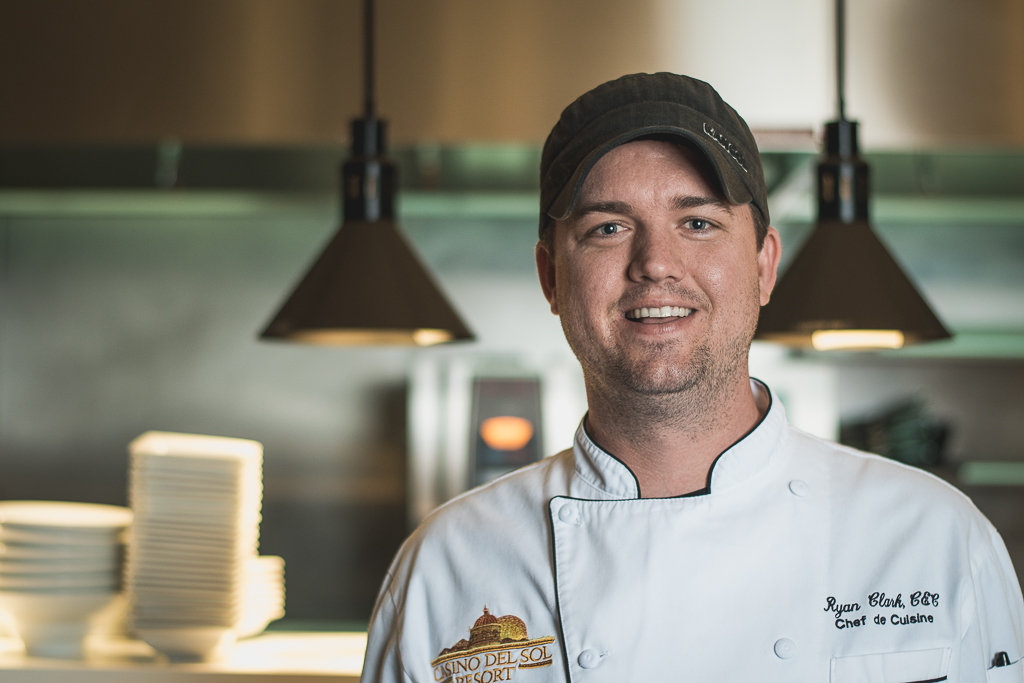
Tools They Use is a new series that takes a peek at local food artisans, such as chefs, bakers, brewers, and more, with a simple photo displaying signature items and favorite tools.
On a desktop computer? Click the image to view at full size in a new window.

The Waring 7″ Immersion Blender can be used directly in large pots and is easier to clean than a standard blender. Clark uses the Vitamix blender instead when a smoother result is needed.
The butcher’s twine helps shape large cuts of meat for a uniform shape and even cooking. It also ties together herbs for easy removal from soups, sauces, and stocks.
“I won it from a pork festival,” said Clark. While you most likely won’t find one at exactly like this easily, here’s an affordable and highly reviewed version: 7 Inch Stainless Steel Chopper-Cleaver-Butcher Knife
Clark keeps a variety of vinegars on his home kitchen countertop, such as Noble Tonic 04: Pharaoh’s Heirloom Lemon Matured White Wine Vinegar and Vinaigre de Vin Affiné en Fût de Chêne 7°.
Precise circles create elegant presentations, but Clark also uses other shaped molds such as rectangle and square. Check out this set of four forming rings.
A double-hinged fulcrum provides extra leverage, which helps remove longer corks. Too many to choose from here.
“We go through about four or five bottles of wine in the kitchen per day for sauces and braises.”
Look for high walls to keep ingredients from spilling. This particular mortar and pestle was crucial for Clark’s victory at a world culinary competition in Thailand. It’s now used for various menu items including anchovy pesto, mostarda of strawberries, chimichurri, moles, curries, and salsas.
“The flavors released from crushing the ingredients between the mortar and pestle are amazing. It aggravates the oils in a way that a food processor blade will not. Also, the texture you can get from using this is not comparable and you are able to easily control the viscosity of the recipe.”
Here’s one Mortal & Pestle option.
“This is left from when I quit smoking. I use it for the pilot lights. Plus when I saw it was a pickle lighter, I had to get it.”
Clark uses these copper spoons at home, but eco-friendly disposable spoons in the restaurant.
“The most important tool in the kitchen is a tasting spoon. You should always be tasting and re-seasoning throughout the cooking process.”
Check out this two-in-one tasting spoon and fork.
“These are the four knives I use the most.”
Here’s a link to the Wusthof Ikon 7-Piece Knife Set with Blackwood Handles
And here’s the Santoku (not in kit).
“It’s a nice French one and is great at scraping the corners of pots. All my other ones were burned or caught on fire because of my cooks. This is the one that made it.”
Check out this olive wood spoon.
The tape peels off easily without leaving residue, making it ideal for labeling reusable food containers with dates.
And if you want to rock Clark’s look, here’s a link to his signature Kangol hat.

For more of Clark’s recipes, check out Modern Southwest Cooking.